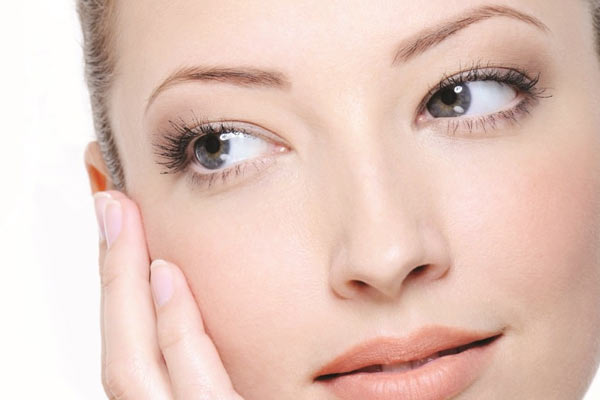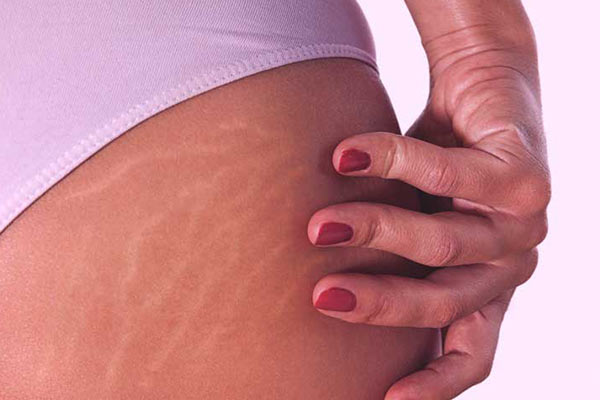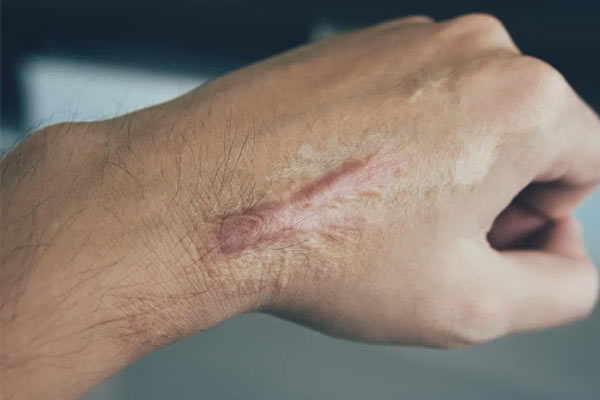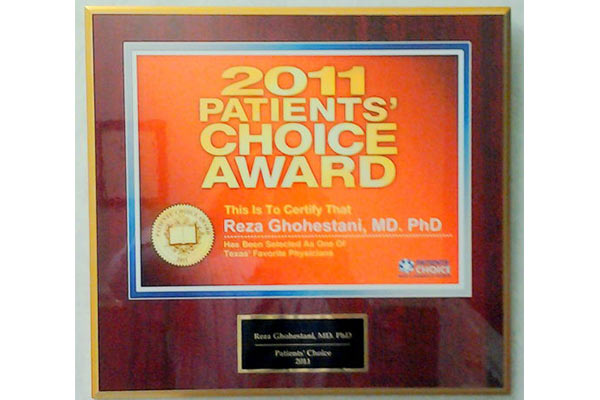
Message from the Director
March 10, 2020
Restylane in San Antonio Boerne
March 10, 2020Press Release for the 1st International Keloid Symposium, AFRICA
San Antonio, TX. Keloid Research Foundation (KRF), in association with Texas Institute of Dermatology and the Groupe de Reflexion de Dermatologie Venerologie du Sud (GRDVS), held 1st International Keloid Symposium – AFRICA at Kenzi Menara Palace in beautiful city of Marrakesh in Morocco on April 30, 2017. This year’s meeting, hosted by GRDVS, was attended by close to 200 delegates from countries ACROSS THE GLOBE.
The symposium was a true bench to bedside meeting with renowned speakers from top academic institutes around the world organized by Dr. Reza Ghohestani of Texas Institute of Dermatology, and Dr. Michael Tirgan of Keloid Research Foundation.
Dr. Aboutaam from Morocco discussed the clinical and epidemiological aspects of Keloids in Morocco. Dr. Hesham Ahmad from Dubai discussed the role of Mesenchymal stem cells in pathogenesis of the disorder. Dr. Mohsen Alirezai from France discussed new techniques in surgical removal of keloids. Dr. Said Amal from Morocco presented his experience in treating keloids with Phenol. Dr. Mousa Diallo from Senegal reviewed the epidemiology, clinical and genetic aspect of keloids in Africa. Dr. Mark Fear from Australia discussed the molecular and cellular cross-talk in keloids. Dr. Reza Ghohestani from USA reviewed the role of ablative and non-ablative lasers in management of keloid patients, educating the audience that CO2 lasers should not be used in treating keloid patients.
Dr. Lamont Jones from USA discussed epidemiology and epigenetic signatures, as well as surgical management of head and neck keloids. Dr. Natalie Jumper from UK reviewed her research on molecular aspects of keloid pathogenesis. Dr. Fatima Mernissi from Morocco discussed her team’s experience with treatment of keloids. Lina Ndjok from France reviewed psychosocial aspects of keloid disorders. Dr. Michael Tirgan presented Data on 283 cases of ear keloids, emphasizing on potential causal relationship between surgery and development of large, semi-massive and massive ear keloids. He also discussed role of cryotherapy, intra-lesional steroids and utility of chemotherapeutic agents in managing keloid lesions. Dr. Jonathan Tsao from Canada discussed brachytherapy as an adjuvant treatment of keloids. Dr. Maria Worsham from USA discussed the concept of master regulators in keloid pathogenesis.
It was clear that there is a growing interest within the dermatology and surgery community in Africa to explore non-surgical treatment methods for treatment of keloids. A common theme to emerge from this meeting was a move to more medical treatment approaches and less surgery due to a high recurrence rate. It was also agreed that there need to be a collaboration between the medical teams across the globe, especially among dermatologists and scientists in countries that have a high burden of this disfiguring condition. Creation of a Keloid Research Network and ultimately a Centers of Excellence for treatment of keloids discussed, both Dr. Ghohestani and Dr. Tirgan were assigned to work on these two important projects with local and international organizations.
The 1st International Symposium on Keloids was a real success attested by feedback received from both attendees and renowned speakers. The organizers of this symposium look forward to continued collaborations with the dermatology community in Morocco and holding a similar meeting in future in Africa. For more information, visit: www.KeloidSymposium.com.
The Texas Institute of Dermatology is dedicated to provide quality dermatology care for the entire San Antonio and Boerne community. The Institute offers excellence in treatment of hair, nail and skin disorders. Texas Institute of Dermatology is the only private Dermatology Institute in South Texas that combines clinical care with research. For more information on Texas Institute of Dermatology, visit www.txid.org.
Helpful Hints: Remember the word: BURNS and ERUPTS when you look out for skin cancer
San Antonio, Texas. Are you interested in learning as how to distinguish between a cancerous and non-canceours skin lesion?
Dr. Ghohestani’s team at Texas Institute of Dermatology proposes novel mneumonics for early detection of non-melanoma skin cancer namely Basal cell (BCC) and Squamous cell carcinoma (SCC). BCC, the most common cancer, together with SCC affecting 1 in 5 Americans. In their early stages, both types of skin cancer are easily treated by an office surgery. If neglected, they can cause local disfigurement, damage to nearby tissues, and, in assume cases, metastasize to distant organs and become fatal. Because they are easily taken care of early on, it is important to detect these skin cancers at the very early stage.
Both patients and physicians should know what signs to look for so that they can detect BCCs and SCCs when they are most easily treatable. Just as with the ABCD of melanoma, the investigators at Texas Institute of Dermatology propose, in an article published in the European Journal of Dermatology, BURNS and ERUPTS as new mnemonics for early detection of SCC and BCC, respectively. This can help our patients to easily recognize the suspicious features of BCCs and SCCs in order to identify them at the very early stage and get them taken care of before they cause unwanted trouble, said Dr. Reza F Ghohestani, director of Texas Institute of Dermatology. According to Dr. Ghohestani, anyone with a suspicious lesion that fits into BURNS or ERUPTS criteria should see a dermatologist.
BURNS for Squamous Cell Carcinoma
- Bleeding: An open sore that bleeds with only slight trauma or on its own suggests skin cancer. Non-cancerous growths do not bleed unless they are injured or irritated.
- Ulcerated: SCCs often look like non-healing ulcers. The ulcer can bleed and crust over, but it refuses to heal.
- Rough Red Growth: A change in the feel or texture of the skin is one of the first signs of SCC. SCCs often look like red, pink, or flesh-colored bumps with a rough surface.
- Non-Healing: SCCs commonly are spots on your skin that do not heal. The sore can be irritated, appear to heal, but ultimately, it comes back.
- Sun-Exposed Area: SCCs are often found on sun-exposed areas of the skin, such as the ear, bald scalp, lower lip, backs of hands, arms, and legs. They can sometimes begin as areas of sun-damaged skin and eventually evolve into skin cancer.
ERUPT for Basal Cell Carcinoma
- Enlarging: BCCs tend to be slow-growing, but with time, they extend in diameter and depth and can end up destroying nearby normal tissue.
- Rolled Borders: BCCs are commonly described as having rolled borders, having a raised edge resembling a pizza crust.
- Ulcerated: BCCs often have central ulcerations that does not heal over time.
- Pearly Papule: Many BCCs appear as shiny, pearly bumps on the skin. Some can be colored with brown, black, or blue hues, but these also tend to have a pearly, translucent quality.
- Telangiectasia: Small dilated blood vessels, or telangiectasia, can be seen on the surface of BCCs. They become more prominent as the lesion grows and the top layer of the skin thins.
- Sun-Exposed Areas: BCCs most commonly occur in sun-exposed areas, especially on the nose, face, and neck. Although sun-exposed areas are most at risk, BCCs can occur in protected areas, so all skin surfaces should be checked.
Take a good look at your skin, look out for any suspicious lumps or bumps, and stay sun safe!
1. Lee Y.H., Ghohestani R.F. BURNS and ERUPTS: Novel Mnemonics for Detection of Squamous Cell Carcinoma and Basal Cell Carcinoma. European Journal of Dermatology. 2010 Nov-Dec;20(6):829-30.
Despite a slight decline in cosmetic procedures last year, BOTOX Cosmetic and Juvederm injections were up. The physicians at Texas Institute of Dermatology see continued interest in BOTOX and Fillers in San Antonio and Boerne over the coming years.
San Antonio, TX – The stalled economy may be to blame for the decline in cosmetic surgical procedures last year, but it has not put a dent in BOTOX Cosmetic or fillers demand. Dr. Ghohestani at Texas Institute of Dermatology (www.txid.org) believes BOTOX will continue to gain in popularity at their practice. In the United States last year, BOTOX injections were up 3.8% from 2008 according to the American Society for Aesthetic Plastic Surgery’s (ASAPS) statistics.
“BOTOX Cosmetic and filler injections have been popular in San Antonio and Boerne area,” says Dr. Ghohestani, a renowned dermatologist. “Perhaps the most important reason for the demand for these treatments are that they are highly effective.” BOTOX can soften or eliminate horizontal forehead furrows, vertical frown lines, crow’s feet and neck bands through tiny injections that take only minutes. “Our Botox and Juvederm patients from San Antonio to Boerne see real results from their treatment in less than few weeks, along with affordability and practically no downtime.” Said Dr. Ghohestani.
BOTOX treatments cost only hundreds of dollars as compared to the thousands of dollars a surgical face or brow lift would cost. The national average for facial surgery procedures last year ranged from $6,000 to $20,000 and upwards. “In the current economy, many of our patients are finding that BOTOX and fillers such as Juvederm and Radiesse offers the perfect mix of treatment benefits and affordable pricing,” notes Dr. Ghohestani.
Additionally, facial surgery may require weeks of recovery time, which is a drawback for many women and men. “We are seeing an increase in BOTOX and Juvederm clients from all walks of life. Most of these patients tend to avoid surgery. They prefer a simple, quick treatment that delivers noticeable results.”
BOTOX and Juvederm are just one of many cosmetic treatments becoming more popular at Texas Institute of Dermatology. The practice offers a full line of skin treatments including injectable fillers like Radiesse and Restylane, along with Microderm and laser therapies to improve the appearance of age spots, veins and rosacea. Other treatments include laser hair removal, AFT for pigmented lesions. In addition to cosmetic services, the doctors at the practice offer clinical dermatology to address acne, vitiligo, psoriasis, hair loss and skin cancer.
With so many treatments available and an office in Leon Springs, Texas Institute of Dermatology has seen a large number of new patients during 2010. For BOTOX, injectables and other skin care services, Texas Institute of Dermatology is committed to delivering proven results through the latest treatments and technologies.
Texas Institute of Dermatology is one of the main dermatology practices in Leon Springs close to San Antonio and Boerne. The Institute offers a diversity of training and wealth of experience that result in truly comprehensive care for their patients. This practice utilizes the latest research and technology and offers the full range of clinical and cosmetic dermatology services for patients of all ages.
The Texas Institute of Dermatology Team Finds Easy-to-Apply, Topical Drug Just as Good as Injectable Compound for a Disfiguring Skin Infection
SAN ANTONIO, March 5 – A plentiful, inexpensive, topical compound is as effective at treating the skin lesions of Middle Eastern and African leishmaniasis as is the standard therapy, a less-available, costlier compound injected into lesions. That’s one of the findings of a research team from Johns Hopkins University, Harvard University, Thomas Jefferson University and led by Reza F. Ghohestani, M.D., Ph.D., director of the Texas Institute of Dermatology and an associate professor of medicine at The University of Texas Health Science Center at San Antonio.
The panel, reporting in the prestigious peer-reviewed journal Public Library of Science Neglected Tropical Diseases, analyzed 14 major clinical research trials that enrolled 1,221 patients. The trials compared the standard therapeutics, known as pentavalent antimony compounds, with the topical treatment, paramomycin. Old World leishmaniasis infection is caused by parasites carried by the desert sandfly and can be found mainly in the Middle East, Mediterranean Sea coastal areas, Africa, and Asia.
More than 12 million people in 88 countries suffer from leishmaniasis and 2 million new cases are diagnosed annually, the authors wrote.
Millions of people worldwide suffer with leishmaniasis, but we in South Texas should keep in mind that cutaneous leishmaniasis is not a rare entity here, either,” Dr. Ghohestani said. In our area the infection is mainly seen in people coming from Mexico and soldiers returning from Iraq.
Pentavalent antimony compounds were considered the main therapeutic option for all types of cutaneous leishmaniasis for decades. They were given intravenously, into muscle or into lesions.
Our findings suggest that the topical paramomycin can be a good alternative for the Old World type of leishmaniasis, especially if MBCL is added,” Dr. Ghohestani said. “Our group is now focused on improving delivery of paramomycin to the skin.” The team is working with the Eastern Mediterranean regional office of the World Health Organization on this project.
Other investigators on the research team were Joachim Bleys, M.D., Ph.D., M.P.H., of The Johns Hopkins Medical Institutions; Hye Jin Chung, M.D., of Jefferson Medical College; and Dae Hyun Kim, M.D., M.P.H., of Harvard Medical School, the Beth Israel Deaconess Medical Center.
The Texas Institute of Dermatology is proud to combine the basic and clinic research with the clinical care. The Institute offers excellence in clinical dermatology as well as in basic and clinical research. General dermatology services are available for Skin Disorders. For more information, visit www.txid.org.




